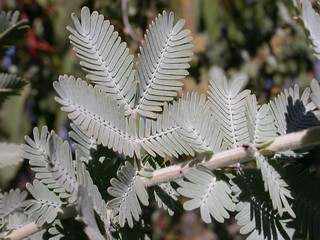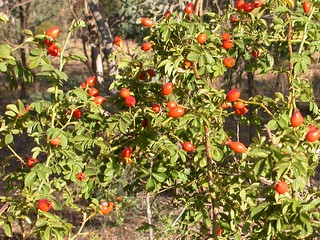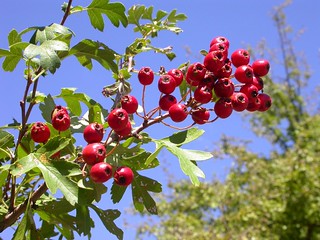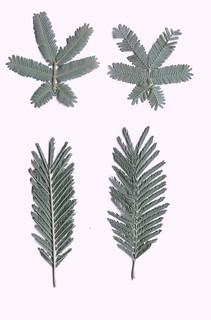
The compound leaf of Cootamundra Wattle has 3-4 pairs of leaflets with the lowest pair embracing the stem (Photo W.Pix)
Help remove woody weeds on the northwest slope of Mount Majura on Sunday 15 March.
When: Sunday, 15 March, 9.00 am – 12 noon; come for an hour or more.
Where: meet at the volunteer registration point close to the nature park entry Tay / Ian Nicol Sts at The Fair, North Watson; click on this map to view the meeting point, the area of the work party and access to the area.
What: Cut-&-daub and frill Sweet Briar Roses, Hawthorns and Cootamundra wattles.
What to expect: large Cootamundras, lots of Hawthorns and Briar Roses and a beautiful carpet of Hoary Sunrays daisies.
Bring: Sun protection, sturdy shoes, body-covering clothing; we provide tools and morning tea.
Please come at 9am for an introduction of the target weeds, the safe use of tools and herbicides and a demo of frilling.
Volunteers arriving late: please check the map for the working area and access, pick up tools and sign the activity sheet.
Access to work area: walk along the Valour Park fence (on the nature reserve side) or from the volunteer registration point walk northeast, pass the little dam then north to the work area.
Bring your friends and help promote the event, download this poster.
Enquiries: Email secretary@majura.org or Phone 6247 7515
To view common woody weeds of Mount Majura including the target weeds of the working party click on the FoMM Woody Weeds Flickr Group

Sweet Briar Rose with fruits (rose hips) and compound leaves (photo W. Pix)
Sweet Briar or Briar Rose, Rosa rubiginosa, a native plant of Europe and West Asia, is a major weed particularly of dry and hilly disturbed land. The seeds are spread by birds and foxes which eat the red fleshy fruits (rose hips). The Sweet Briar Rose was introduced to Australia in the early 1800’s as garden and hedge plant. The compound Briar Rose leaf comprise 5-9 leaflets with serrated margins.

Hawthorns have lobed leaves and fleshy red fruits in autumn (Photo W. Pix)
Hawthorn, Crataegus monogyna, a thorny deciduous large shrub or small to 10m high tree with roughly wedge-shaped, lobed leaves and fleshy up to 1cm wide fruits that turn red when ripe. A native to Europe, Hawthorn was introduced to Australia in the mid 1800s as a hedgerow and ornamental species. It is a highly invasive weed of woodlands and open forests..

Low-branching Hawthorns at The Fair provide rabbit habitat (Photo W. Pix)
The species hosts the Peer and Cherry Slug (Caliroa cerasi), provides rabbit habitat, and – as other autumn-fruit bearing ornamental shrubs such as Firethorn and Privet – has contributed to the increase of Currawong numbers which contributed to the decline of small woodland birds. The seeds are mainly spread by birds.
Cootamundra wattle, Acacia baileyana is an Australian species, which does not naturally occur in Canberra. As many of the environmental woody weeds that we find in the nature reserve, Cootamundras were introduced to the ACT as an ornamental garden and landscape plant. The highly invasive species is now widespread in Namadgi National Park and the nature reserves of the ACT. The compound blueish-grey-green leaves resemble those of the local species Sliver wattle, Acacia dealbata, which native to the Mount Majura and Mount Ainslie nature reserves.

Compound leaves Cootamundra wattle (top) and Silver wattle (bottom)
How to tell-apart from look-a-likes. The compound blueish-grey-green leaves of a Cootamundra wattle (top in the right panel) resemble those of the local species Sliver wattle. The leaves of Cootamundra wattles have 3-4 pairs of leaflets arranged along the leaf stem, the lowest pair is shorter and embraces the branch to which the leaf is attached. The leaves of Silver wattles have 8-20 pairs of leaflets arranged along to the leaf stem and the lowest pair does not embrace the branch.


